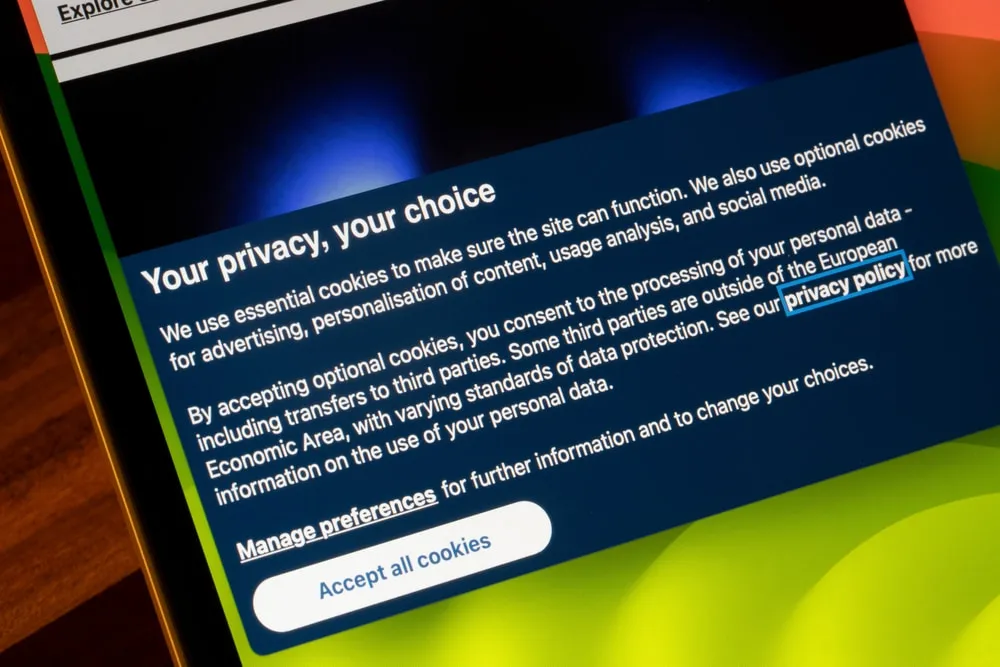Cookies have been created to improve the user experience of websites. their main use is to enable companies to collect data on their users as they browse. So they can gain a better understanding of the audience they are targeting and the way in which they it interacts with their content.
The problem is that the use of cookies has also raised a number of concerns, particularly with regard to the privacy of Internet users. In recent years, web browsers and regulators have taken stpeds to limit heir use and protect users. This is known as the cookieless world (a future era without cookies).
The end of third-party cookies has been announced for the second half of 2024. Google is therefore preparing to separate itself from this fundamental element for the brands that use it to optimise their advertising and cusotmer experience.
So what does this cookieless world look like? And what are the alternatives for continuing to understand your customers’ expectations? Here are a few avenues to explore to optimise your data collection strategy in this new world.
Google speeds up the advent of a cookieless world
Everyone is talking about it, but the much-heralded cookieless world has been slow to arrive. Google has repeatedly postponed the deletion of third-party cookies , with the aim of relaunching the process in 2024. On 4th January 2024, the American giant began testing a new tool, “tracking protection”, which aims to limit the tracking of users from site to site.
In fact, only a small percentage of Chrome users have already switched to a third-party cookie-free environment.. Dans les mois à venir, cette première phase de test sera étendue à un plus large public. Mais d’ici là, les entreprises ont encore peu de visibilité sur les effets de cette protection contre le suivi.
According to Google’s teams, the definitive deletion of third-party cookies should take place in the second half of 2024… Provided, however, that all remaining concerns are resolved. it has to be said that companies in all sectors of activity are still little or unprepared for the end of cookies. Not to mention governments, which are worried about the impact of this cookieless world on competition.
Businesses are therefore expecting access problems. Sites that do not function without thirs-party cookies may no longer be accessible. Google is also trying to reassure them with this first phase of the “more private web”. It announced that it would provide “the tools needed to make their online operations and experiences successful, so that high-quality content remains freely accessible”.
The challenges of a world without cookies
Cookies have always been a valuable tool for tracking user behavior and to attribute conversions to specific marketing campaigns. however, with increasing privacy concerns and the growing use of ad blockers, cookies are becoming less effective.
As the worlds moves towards a cookie-free future, marketers face new challenges in understanding and reaching their target audiences, optimising their data collection and advertising targeting.
Cookieless world: the problem of attribution
Attribution is one of the main challenges facin brands in a cookieless world. It refers to the process of identification of the marketing channels or contact points that have led to a conversion or the completion of an action desired by the company (such as signing up for a newsletter).
Without cookies, it can be more difficult to track users across all devices and browsers. Above all, it is more difficult to attribute conversions to specific campaigns or marketing efforts. Companies will therefore lack the data they need to optimise their strategy when it comes to targeting the channels most likely to convert their prospects.
The end of behavioural data
Another challenge for attribution in a world without cookies is the toss of granular data (or behavioral). Cookies enabled companies to track user behavior at a very precise level. They could identify which pages they had visited, the time spent on each of them and the actions they had taken.
Without cookies, it becomes more difficult to identify contact points and CTAs that generate the most on-site conversions. But it also makes it harder to target the firctions that may be causing the brand to lose out on commercial opportunities.
A world without third-party data
Finally, the end of third-party cookies also marks the end of third-party data. Third-party data is collected and shared by other companies.
Yet this data is generally used to optimise advertising campaigns aimed at a specific audience. For example, a retailer might use this type of data to send ads to users who have recently searched for a product or who have shown an interest in a product category.
Adopting intelligent marketing to collect proprietary data
With the disappearance of cookies, marketers will have to rely on other methods to identify users and understadn their behavior. What may appear to be a colossal challenge to overcome will prove to be so in the long term, an opportunity to optimise your data collection strategy.
Companies will therefore have to implement new tools to collect more reliable and complete proprietary data.
Gamification to collect first party and zero party data
Companies can focus on collecting data voluntarily shared by their customers and prospects (also known as zero party data and first party data).). En collectant des données directement auprès de leur audience, les spécialistes du marketing peuvent mieux comprendre leurs préférences et leurs comportements. Ils peuvent ensuite cibler leurs campagnes marketing plus efficacement.
Companies can also work to develop data collection practices that are more transparent and ethical. The use of interactive levers such as marketing games. makes data collection funnier. But it also introduces a stronger bond of trust between the brand and its customers.
Explore alternative identifiers
As third-party cookie disappear, advertisers are exploring alternative identifiers to track user behavior. These may include email addresses, device identifiers or even hashed data.
Be careful, however, to respect user confidentiality and existing regulations. Generally speaking, advertisers will have to learn to strike the right balance between personalising their marketing campaigns and respecting their customers’ privacy.
Unify data from several sources
Tools and techniques also exist to extract and unify data from several sources. The whole point of these solutions is to make it easier to collect and analyse behavioural data across all the channels used by customers. Then they can be activated more effectively to create and distribute advertising campaigns in the right place and to the right people.
Conclusion
While the transition to a cookieless world can be a complicated time for marketers, it also provides an opportunity to reassess their data collection strategy. By adopting less intrusive and more participative solutions and strategies, you can get to know your customers better and retain their trust.
Discover our interactive marketing experiences for collecting first party and zero party data in complete transparency!






